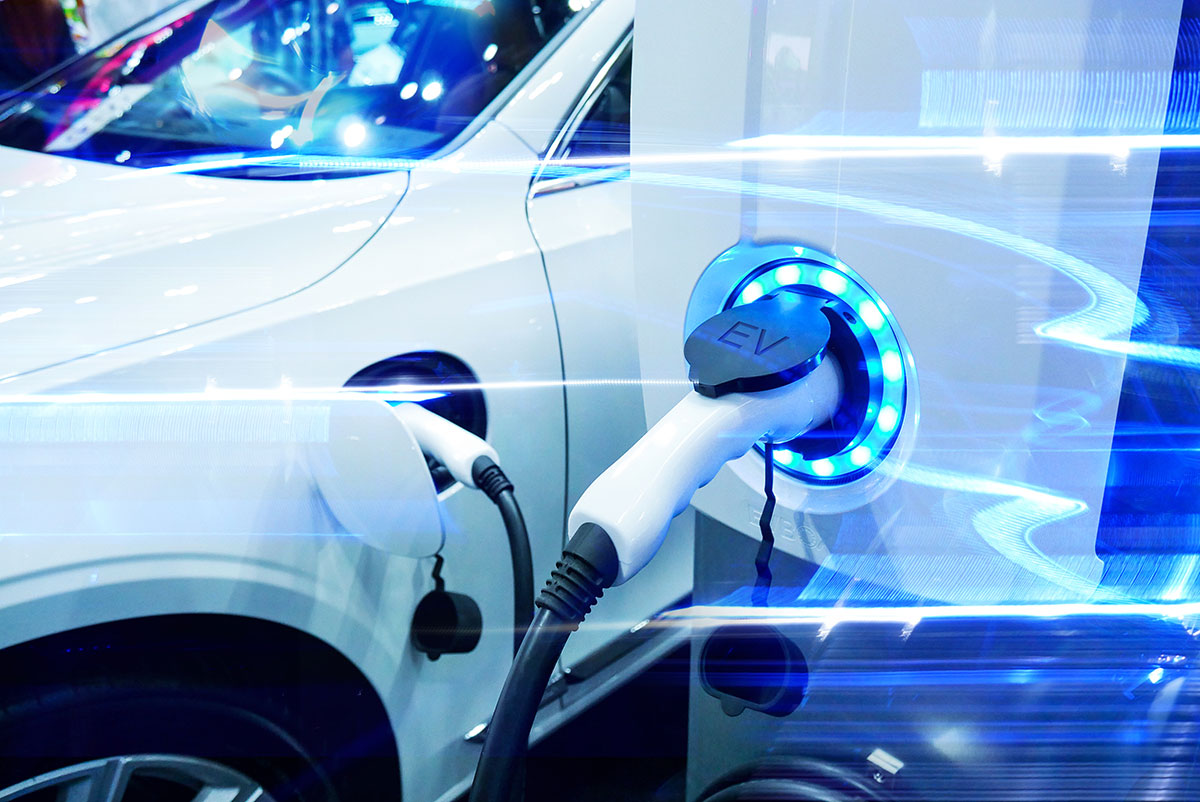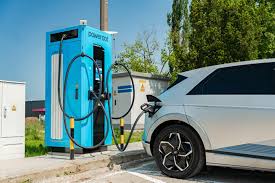The Evolution of Autonomous Vehicles: How Self-Driving Cars Will Change the Future

Introduction
Autonomous vehicles (AVs), or self-driving cars, are no longer just a concept from science fiction. Over the past few decades, technological advancements in artificial intelligence (AI), machine learning, and sensor technology have brought us closer to the reality of fully autonomous vehicles. These vehicles have the potential to revolutionize the transportation industry, impacting everything from road safety to urban planning. This article explores the evolution of autonomous vehicles, their potential impact on society, and the challenges they face in becoming mainstream.
1. What Are Autonomous Vehicles?
- Definition and Levels of Autonomy
- Autonomous vehicles are cars or trucks that are capable of driving themselves without human intervention. These vehicles use a combination of sensors, cameras, radar, and AI algorithms to navigate and make decisions on the road.
- The Society of Automotive Engineers (SAE) has defined six levels of automation for self-driving vehicles, ranging from Level 0 (no automation) to Level 5 (full automation). At Level 5, the vehicle is fully autonomous, requiring no human input at all.
- How Do Autonomous Vehicles Work?
- AVs rely on a variety of technologies to perceive their environment. These include LiDAR (Light Detection and Ranging), radar, cameras, and ultrasonic sensors that help the vehicle detect obstacles, road signs, and other vehicles.
- The data from these sensors is processed by AI algorithms, which interpret the information to make driving decisions, such as when to accelerate, brake, or steer. This technology allows the vehicle to operate autonomously, even in complex driving scenarios.
2. The Evolution of Autonomous Vehicle Technology
- Early Beginnings of Autonomous Vehicles
- The concept of self-driving cars dates back to the 1920s when various inventors first proposed the idea of vehicles that could drive themselves. However, it wasn’t until the 1980s that actual progress began to be made.
- In 1986, the first experimental self-driving car, known as the “Navlab,” was developed by Carnegie Mellon University. This car used cameras and computer vision to navigate. While it was not fully autonomous, it laid the foundation for future advancements in AV technology.
- The 2000s: A Turning Point in Self-Driving Cars
- The 2000s saw significant advancements in autonomous vehicle technology, largely driven by government-funded research. The DARPA Grand Challenge, a series of competitions for self-driving vehicles, helped accelerate the development of autonomous vehicles.
- In 2004, the first DARPA Grand Challenge took place, where autonomous vehicles were tasked with navigating a desert course. Although no vehicle completed the race, the event spurred increased investment in autonomous vehicle technology.
- The 2010s: Commercialization and Testing
- In 2010, Google launched its self-driving car project, which marked a major milestone in the commercialization of AVs. By 2015, Google’s self-driving car had driven more than 1 million miles on public roads.
- Other companies, including Tesla, Uber, and traditional automakers like Ford and General Motors, also entered the race to develop self-driving technology. Tesla’s Autopilot feature, which provides semi-autonomous driving capabilities, became a game-changer in the industry, bringing self-driving technology closer to the mainstream.
3. The Benefits of Autonomous Vehicles
- Improved Road Safety
- One of the key benefits of autonomous vehicles is the potential to reduce traffic accidents. According to the National Highway Traffic Safety Administration (NHTSA), over 90% of traffic accidents are caused by human error. Autonomous vehicles have the potential to eliminate this factor, leading to fewer accidents, injuries, and fatalities.
- AVs can also respond to hazardous driving situations faster than humans, using their advanced sensors to detect potential dangers and react accordingly. This could significantly reduce accidents caused by distracted driving, driving under the influence, and other human-related factors.
- Increased Mobility and Accessibility
- Autonomous vehicles could greatly benefit individuals who are unable to drive due to age, disability, or other reasons. Self-driving cars can provide greater independence and mobility for these individuals, allowing them to travel without the need for a driver.
- This could also benefit elderly populations, who may have difficulty getting around as they age. With autonomous vehicles, they could maintain their mobility and independence without relying on family members or caregivers.
- Reduced Traffic Congestion and Fuel Consumption
- AVs have the potential to reduce traffic congestion, especially in urban areas. Through communication with other vehicles and traffic infrastructure, autonomous cars can optimize traffic flow, reduce stop-and-go traffic, and minimize the time spent idling in traffic.
- Additionally, autonomous vehicles could improve fuel efficiency by optimizing driving patterns. For example, AVs can maintain consistent speeds, reduce unnecessary acceleration, and take the most efficient routes, reducing overall fuel consumption and emissions.
4. Challenges Facing Autonomous Vehicles
- Regulatory and Legal Issues
- One of the major hurdles to the widespread adoption of autonomous vehicles is the lack of clear regulations. Many countries are still grappling with how to regulate AVs, and the legal framework for self-driving cars is still in its infancy.
- Issues such as liability in case of accidents, traffic laws, and insurance policies need to be addressed before AVs can be widely deployed. Additionally, ethical concerns, such as how AVs should make decisions in life-threatening situations (e.g., should an AV prioritize the safety of its occupants over pedestrians?), remain unresolved.
- Public Trust and Acceptance
- Another significant challenge is gaining public trust and acceptance of autonomous vehicles. Many people remain skeptical about the safety and reliability of self-driving cars, especially after high-profile incidents involving autonomous vehicles, such as the fatal Uber self-driving car accident in 2018.
- For autonomous vehicles to become mainstream, public perception must shift, and people must feel confident in the safety of AVs. This will require extensive testing, transparency, and education to reassure consumers about the technology.
- Technical Limitations and Safety Concerns
- While AVs have made great strides in terms of technology, they still face challenges in certain driving conditions. For example, AVs can struggle in adverse weather conditions such as heavy rain, snow, or fog, which can impair sensor performance and hinder navigation.
- Additionally, the technology behind autonomous vehicles is still evolving, and there are concerns about the reliability of sensors, AI algorithms, and software. Any technical failure in these systems could have catastrophic consequences, leading to a loss of public confidence.
5. The Future of Autonomous Vehicles
- Integration with Smart Cities
- Autonomous vehicles will likely play a key role in the development of smart cities. By integrating with advanced traffic management systems, AVs could help optimize traffic flow, reduce congestion, and improve overall city infrastructure.
- Self-driving cars could also work in conjunction with other autonomous systems, such as delivery drones and autonomous buses, creating a fully integrated transportation ecosystem.
- Autonomous Ride-Sharing Services
- Another promising application for autonomous vehicles is in the ride-sharing industry. Companies like Uber and Lyft are already exploring the possibility of autonomous ride-hailing services, which could reduce the need for private car ownership and decrease the number of vehicles on the road.
- Autonomous ride-sharing could also make transportation more affordable and efficient, as self-driving cars could be available on demand, eliminating the need for a driver and reducing operating costs.
- Potential for Autonomous Trucks
- The autonomous vehicle revolution is not limited to passenger cars. Self-driving trucks have the potential to transform the logistics and freight industries. Autonomous trucks could increase efficiency in goods transportation, reduce costs, and minimize human error in long-haul trucking.
- However, the widespread adoption of autonomous trucks will require addressing issues such as regulatory concerns, safety standards, and the impact on the trucking workforce.
6. Conclusion
The evolution of autonomous vehicles is poised to reshape the future of transportation in profound ways. While there are still many challenges to overcome, including regulatory hurdles, public acceptance, and technical limitations, the potential benefits of AVs are undeniable. From improving road safety and reducing traffic congestion to increasing mobility and accessibility, self-driving cars have the power to transform how we travel. As technology continues to advance, autonomous vehicles will become an integral part of our transportation systems, paving the way for a safer, more efficient, and more sustainable future.





